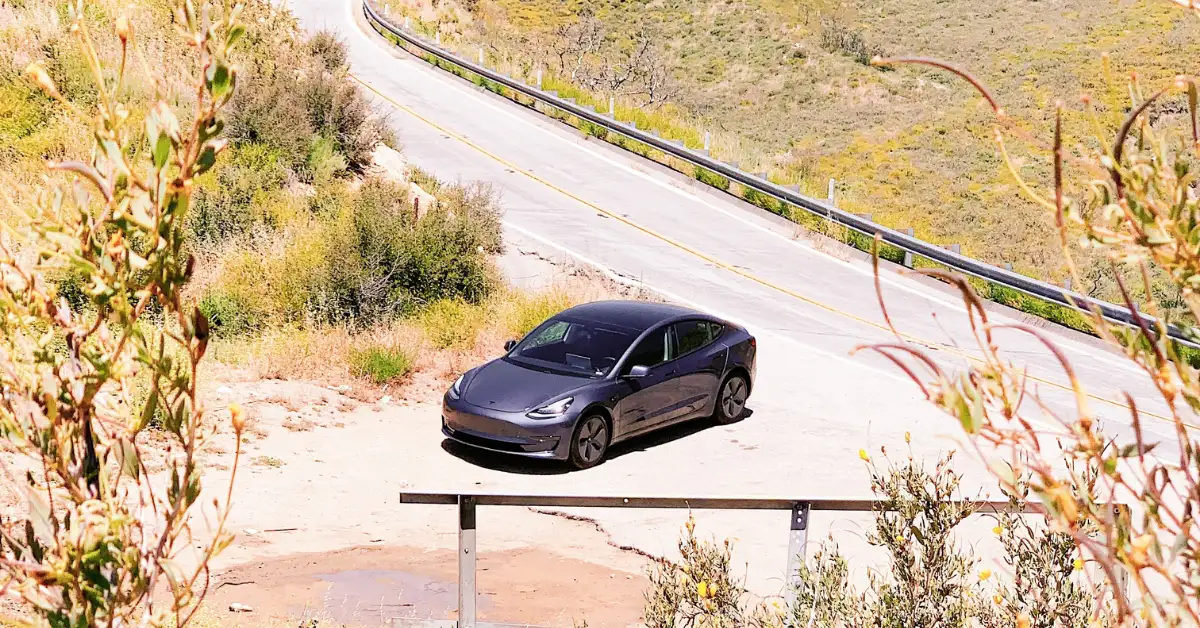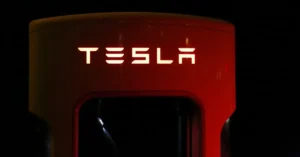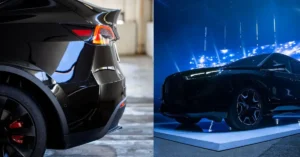The electric vehicle market has been growing rapidly in recent years, with more and more automakers introducing their own models. Among the most popular are the Nissan Leaf and the Tesla Model 3. These two vehicles have been compared time and time again, with each having its own strengths and weaknesses. But which one is better?
Table of Contents
When it comes to the Tesla Model 3, the first thing that comes to mind is Elon Musk and his many projects. This car has been hailed as a game-changer in the EV market, with its sleek design, impressive range, and advanced technology. On the other hand, the Nissan Leaf has been around for much longer and is known for its affordability and practicality. But how do these two vehicles compare in terms of performance, features, and overall value?
In this article, we will take a closer look at the Nissan Leaf vs. Tesla Model 3 and explore the pros and cons of each. We will analyze their battery life, charging capabilities, safety features, and more to help you make an informed decision. So, whether you’re in the market for a new EV or just curious about the differences between these two popular models, read on to find out everything you need to know.
Wondering if the Nissan Leaf is a better choice over a Tesla? Then read this article about the question: Nissan Leaf vs Tesla 3!
Nisan Leaf vs Tesla 3
The Nissan Leaf was one of the first mass-market EVs, and it has undergone several updates and redesigns since its initial release. While the Leaf has been a popular choice for EV enthusiasts, it faces stiff competition from the Tesla Model 3.
In this article, we will compare the two affordable EVs: the Nissan Leaf and the Tesla Model 3. Which EV offers the best value for the price? Which one has better range and charging times? What about power and acceleration? We will examine these questions and more to help you decide which EV is right for you.
Overview
Electric cars are becoming increasingly popular as people are looking for more eco-friendly alternatives to traditional gasoline-powered vehicles. Two of the most popular electric cars on the market today are the Nissan Leaf and the Tesla Model 3. In this article, we will compare the two vehicles and see how they stack up against each other.
The Nissan Leaf is a compact electric car that has been around since 2010. It is known for its affordability, making it a popular choice for those who want to go electric but don’t want to break the bank. The Tesla Model 3, on the other hand, is a more luxurious electric car that was introduced in 2017 by Elon Musk’s Tesla Motors. Its performance and features are making it a popular choice for those who want a high-end electric car.
When it comes to MSRP, the Nissan Leaf is significantly cheaper than the Tesla Model 3. The starting price for the 2023 Nissan Leaf is $28,040, while the starting price for the 2023 Tesla Model 3 is $39,990. However, the Tesla Model 3 offers better performance and features than the Nissan Leaf, making it worth the extra cost for some buyers.
In terms of performance, the Tesla Model 3 is the clear winner. It has a faster acceleration time, with the ability to go from 0 to 60 mph in as little as 3.5 seconds. The Nissan Leaf, on the other hand, takes about 7 seconds to reach 60 mph. The Tesla Model 3 also has a longer driving range, with a maximum range of 353 miles compared to the Nissan Leaf’s maximum range of 226 miles.
Both the Nissan Leaf and the Tesla Model 3 offer a number of features to make driving more enjoyable and convenient. The Tesla Model 3, however, has more advanced features such as a self-driving mode, a larger touchscreen display, and a more sophisticated sound system.
Overall, the Nissan Leaf and the Tesla Model 3 are both great electric cars, but they cater to different types of buyers. The Nissan Leaf is a more affordable option for those who want to go electric, while the Tesla Model 3 is a luxury option for those who want the best performance and features.
Exterior
The exterior of a car is often the first thing that catches the eye of potential buyers. In the case of the Nissan Leaf and the Tesla Model 3, both cars have unique designs that set them apart in the market.
Dimensions
The Nissan Leaf is a hatchback that measures 176.4 inches in length, 70.5 inches in width, and 61.4 inches in height. On the other hand, the Tesla Model 3 is slightly longer at 184.8 inches, wider at 72.8 inches, and lower at 56.8 inches. These dimensions give the Model 3 a sportier look and feel, while the Leaf’s smaller size makes it easier to maneuver in tight spaces.
Wheels
Both cars come with 18-inch wheels as standard, but the Model 3 offers 19-inch and 20-inch wheels as an option. The Leaf, on the other hand, only offers 17-inch wheels as an option. The larger wheels on the Model 3 give it a more aggressive stance and improve handling, but they also come at a higher cost.
Suspension
The Tesla Model 3 comes with a double-wishbone front suspension and a multi-link rear suspension, which provides a smoother ride and better handling. The Nissan Leaf, on the other hand, comes with a simpler MacPherson strut front suspension and a torsion beam rear suspension. While this setup is adequate for most drivers, it may not provide the same level of comfort and handling as the Model 3.
Overall, both the Nissan Leaf and the Tesla Model 3 have unique exterior designs that cater to different buyers. While the Leaf’s smaller size and simpler suspension may appeal to those looking for a more practical and affordable electric car, the Model 3’s larger size, sportier stance, and advanced suspension make it a more enticing option for those looking for a luxury electric vehicle.

Interior
When it comes to electric vehicles, the interior is an important factor to consider. In this section, we will compare the interior of the Nissan Leaf and the Tesla Model 3, focusing on seats, cargo volume, infotainment, and comfort.
Seats
The Nissan Leaf comes with cloth seats, while the Tesla Model 3 has premium synthetic seats. Both cars have bucket seats in the front, and the Tesla Model 3 has a power driver seat and a power passenger seat, which are not available in the Nissan Leaf. The Leaf does have a heated rear seat, which the Model 3 lacks.
Cargo Volume
The Nissan Leaf has a cargo volume of 23.6 cubic feet with the rear seats up and 30 cubic feet with the rear seats down. The Tesla Model 3, on the other hand, has a trunk volume of 15 cubic feet. While the Leaf offers more cargo space, the Model 3 has a front trunk, which can be used for additional storage.
Infotainment
Both cars come with an entertainment system and a navigation system. The Tesla Model 3 has a 15-inch touchscreen display, which is larger than the 8-inch display in the Nissan Leaf. The Model 3 also has a more advanced infotainment system, which includes features like voice recognition and internet connectivity.
Comfort
In terms of comfort, the Tesla Model 3 has more front headroom, front legroom, and front shoulder room than the Nissan Leaf. However, the Leaf has more front hip room and passenger volume. The second row of both cars has similar headroom, hip room, and shoulder room, but the Model 3 has more legroom due to its longer body.
Overall, the Tesla Model 3 has a more advanced and spacious interior than the Nissan Leaf. However, the Leaf offers more cargo space and has a heated rear seat, which could be important for some drivers.
Performance
When it comes to electric vehicles, performance is a crucial factor that determines the driving experience. In this section, we will compare the performance of the Nissan Leaf and the Tesla Model 3. We will look at various aspects such as acceleration, range, transmission, steering, torque, horsepower, and brakes.
Acceleration
The Tesla Model 3 is known for its impressive acceleration. It can go from 0 to 60 mph in just 5.3 seconds, while the Nissan Leaf takes 7.4 seconds to reach the same speed. This means that the Model 3 offers a more thrilling driving experience than the Leaf.
Range
The range of an electric vehicle is another important factor to consider. The Tesla Model 3 has a range of up to 263 miles on a single charge, while the Nissan Leaf has a range of up to 150 miles. This means that the Model 3 is better suited for long-distance driving than the Leaf.
Transmission
Both the Nissan Leaf and the Tesla Model 3 have a single-speed transmission. This means that they do not have a traditional gearbox. The lack of gears makes the driving experience smoother and more effortless.
Steering
The steering on the Tesla Model 3 is more responsive and precise than the Nissan Leaf. This makes it easier to navigate through tight corners and winding roads.
Torque
The Tesla Model 3 has more torque than the Nissan Leaf which results in a faster acceleration and better handling of steep inclines.
Horsepower
The Tesla Model 3 has a more powerful motor than the Nissan Leaf. It has a horsepower of 283, while the Leaf has a horsepower of 147.
Brakes
Both the Nissan Leaf and the Tesla Model 3 have regenerative brakes so that the kinetic energy generated during braking is converted into electrical energy and stored in the battery. The regenerative braking system on the Model 3 is more efficient than the Leaf.
As you can see, the Tesla Model 3 outperforms the Nissan Leaf in almost every aspect of performance. From acceleration to range to steering, the Model 3 offers a more thrilling and engaging driving experience. However, the Leaf is still a competent electric vehicle that offers a smooth and comfortable ride.
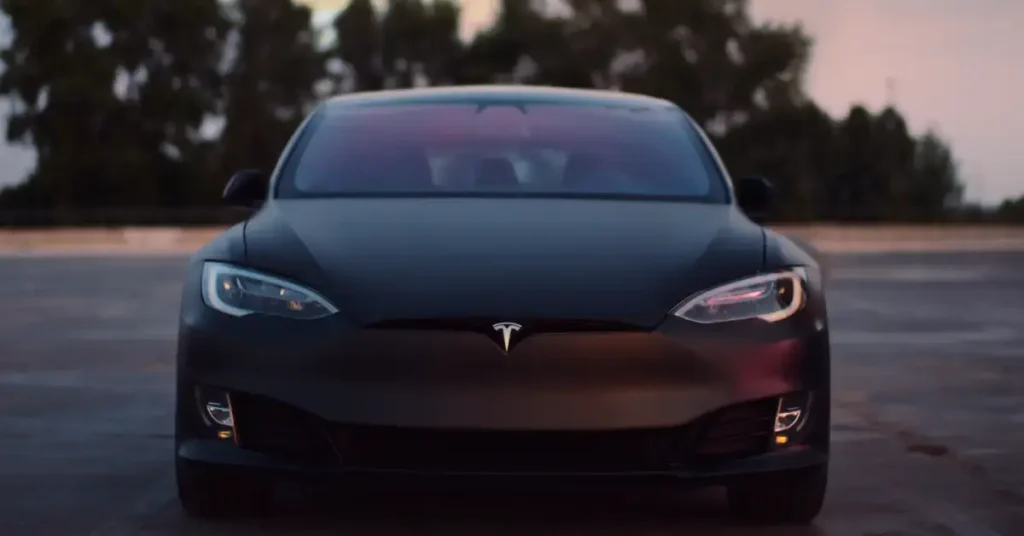
Safety
Safety is a top priority for most drivers and for us as car enthusiats as well. Both cars come with a variety of safety features that are designed to keep drivers and passengers safe on the road.
One of the most notable safety features on both the Nissan Leaf and Tesla Model 3 is Adaptive Cruise Control. This feature allows the car to maintain a safe distance from the car in front of it, even if that car slows down or speeds up unexpectedly. This can be especially helpful in heavy traffic or on long road trips.
Another safety feature that is available on both cars is Automatic Parking. This feature allows the car to park itself, which can be helpful for drivers who struggle with parallel parking. Heated Steering Wheel is also available on both cars, which can be a nice feature for drivers who live in colder climates.
Both the Nissan Leaf and Tesla Model 3 also come with Keyless Entry and Keyless Start. This allows drivers to enter and start the car without having to take their keys out of their pocket or purse. Power Door Locks are also standard on both cars.
Rear Parking Aid is another safety feature that is available on both the Nissan Leaf and Tesla Model 3. This feature uses sensors to detect objects behind the car, which can be helpful when backing up in tight spaces. Remote Trunk Release is also available on both cars, which allows drivers to open the trunk without having to physically touch it.
Overall, both the Nissan Leaf and Tesla Model 3 come with a variety of safety features that are designed to keep drivers and passengers safe on the road. Whether you’re looking for Adaptive Cruise Control, Automatic Parking, Heated Steering Wheel, Keyless Entry, Keyless Start, Power Door Locks, Rear Parking Aid, or Remote Trunk Release, both cars have you covered.
Infotainment
When it comes to infotainment, the Nissan Leaf and Tesla Model 3 both offer a range of features to keep drivers connected and entertained on the road. In this section, we’ll take a closer look at the various infotainment options available in these two electric vehicles.
Radio
Both the Nissan Leaf and Tesla Model 3 come equipped with a standard radio system, allowing drivers to tune into their favorite stations and enjoy music, news, and other programming while on the road. The Model 3’s radio system is particularly impressive, with a high-quality sound system that provides excellent audio quality.
Android Auto
Android Auto is a popular feature that allows drivers to integrate their Android smartphones with their vehicle’s infotainment system. Unfortunately, neither the Nissan Leaf nor the Tesla Model 3 currently support Android Auto.
Apple CarPlay
Apple CarPlay, on the other hand, is supported by both the Leaf and Model 3. This allows drivers with iPhones to connect their devices and access a range of features, including music, messaging, and navigation.
Smart Device Integration
In addition to Apple CarPlay, both the Leaf and Model 3 offer a range of other smart device integration options. This includes Bluetooth connectivity, which allows drivers to stream music and make hands-free phone calls, as well as USB ports for charging and data transfer.
WiFi Hotspot
Finally, the Tesla Model 3 offers an optional WiFi hotspot, which allows passengers to connect to the internet while on the go. This can be particularly useful for long road trips, as it allows passengers to stay connected and entertained throughout the journey.
Overall, while the Nissan Leaf and Tesla Model 3 offer similar infotainment options, the Model 3’s superior sound system and optional WiFi hotspot give it a slight edge in this category.
Price
The price can be a significant and limiting factor in making a decision. In this section, we will compare the price of the Nissan Leaf and Tesla Model 3.
The 2023 Nissan Leaf starts at $28,040, making it one of the more affordable electric vehicles on the market. On the other hand, the 2023 Tesla Model 3 starts at $39,990, which is significantly more expensive than the Leaf. However, it’s important to note that the Model 3 offers a longer range and faster acceleration than the Leaf.
If you’re looking for a more affordable option, the Nissan Leaf is a great choice. It’s worth noting that the Leaf also qualifies for a federal tax credit of up to $7,500, which can help offset the cost.
On the other hand, the Tesla Model 3 has a higher price tag but also offers more advanced features and technology. For example, the Model 3 comes standard with Autopilot, Tesla’s advanced driver assistance system. It also has a larger touchscreen display and a more luxurious interior.
In summary, the Nissan Leaf is a more affordable option for those on a budget, while the Tesla Model 3 offers more advanced features and technology at a higher price point. Ultimately, the decision comes down to personal preference and priorities.
Overall, the price comparison between the two electric vehicles highlights the different approaches taken by Nissan and Tesla. While Nissan focuses on affordability, Tesla emphasizes advanced technology and features. Both companies are led by visionary entrepreneurs, with Nissan being led by Carlos Ghosn and Tesla being led by Elon Musk. Speaking of Elon Musk projects, the Model 3 is one of his most ambitious projects yet, and it has certainly lived up to the hype.
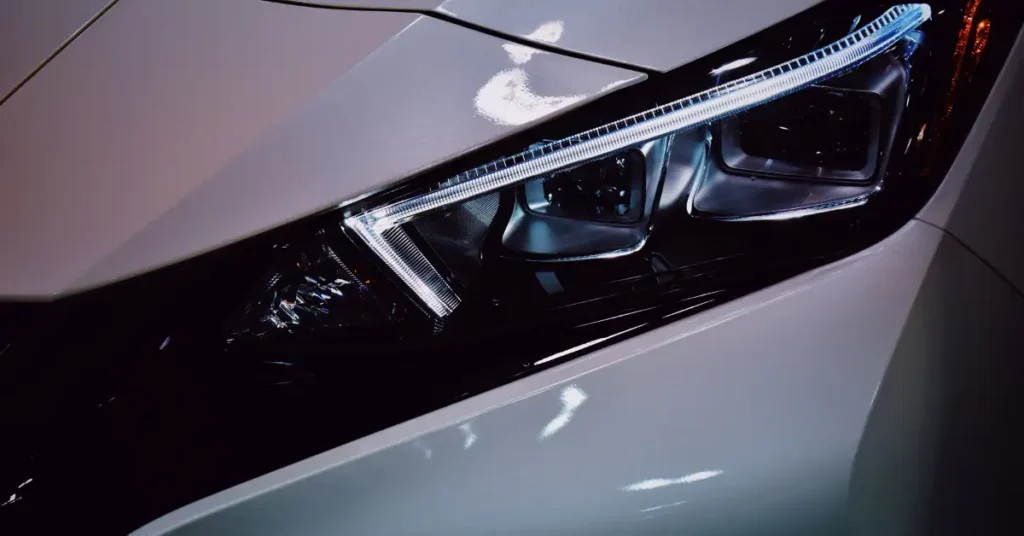
Frequently Asked Questions
Which is better: Nissan Leaf or Tesla Model 3?
The answer to this question depends on what the buyer is looking for. The Tesla Model 3 is a more luxurious and high-performance electric vehicle, while the Nissan Leaf is a more affordable and practical option. The Model 3 has a longer driving range and faster acceleration, but the Leaf has a more spacious interior and better visibility. Ultimately, it comes down to personal preferences and priorities.
What are the differences between Nissan Leaf and Tesla Model 3?
The main differences between the Nissan Leaf and Tesla Model 3 are in their performance, range, and features. The Model 3 has a longer range, faster acceleration, and more advanced technology, while the Leaf has a more spacious interior and better visibility. The Model 3 is also more expensive than the Leaf, but it offers a more luxurious driving experience.
How does the price of Nissan Leaf compare to Tesla Model 3?
The Nissan Leaf is significantly cheaper than the Tesla Model 3. The Leaf has a starting price of around $28,000, while the Model 3 starts at around $40,000. However, the Model 3 offers more advanced features and a longer range, which may justify the higher price for some buyers.
What is the driving range of Nissan Leaf compared to Tesla Model 3?
The Tesla Model 3 has a significantly longer driving range than the Nissan Leaf. The Model 3 can travel up to 358 miles on a single charge, while the Leaf has a range of up to 150 miles. However, the Leaf is still a practical option for many drivers, especially those who primarily use their vehicle for short commutes and errands.
What are the charging times for Nissan Leaf and Tesla Model 3?
The charging times for the Nissan Leaf and Tesla Model 3 depend on the charging method and the battery size. The Model 3 can be charged at a Tesla Supercharger station, which can provide up to 170 miles of range in just 30 minutes. The Leaf can be charged at a DC fast charger, which can provide up to 80 miles of range in 30 minutes. Both vehicles can also be charged at home using a standard wall outlet or a dedicated charging station.
What are the safety ratings for Nissan Leaf and Tesla Model 3?
Both the Nissan Leaf and Tesla Model 3 have received high safety ratings from independent organizations. The Model 3 has received a 5-star overall safety rating from the National Highway Traffic Safety Administration (NHTSA), while the Leaf has received a 4-star overall safety rating. Both vehicles are equipped with advanced safety features, such as automatic emergency braking and lane departure warning.
If you liked this blog article about the topic: Nissan Leaf vs Tesla 3, don’t forget to leave us a comment down below to tell us about your experience.

